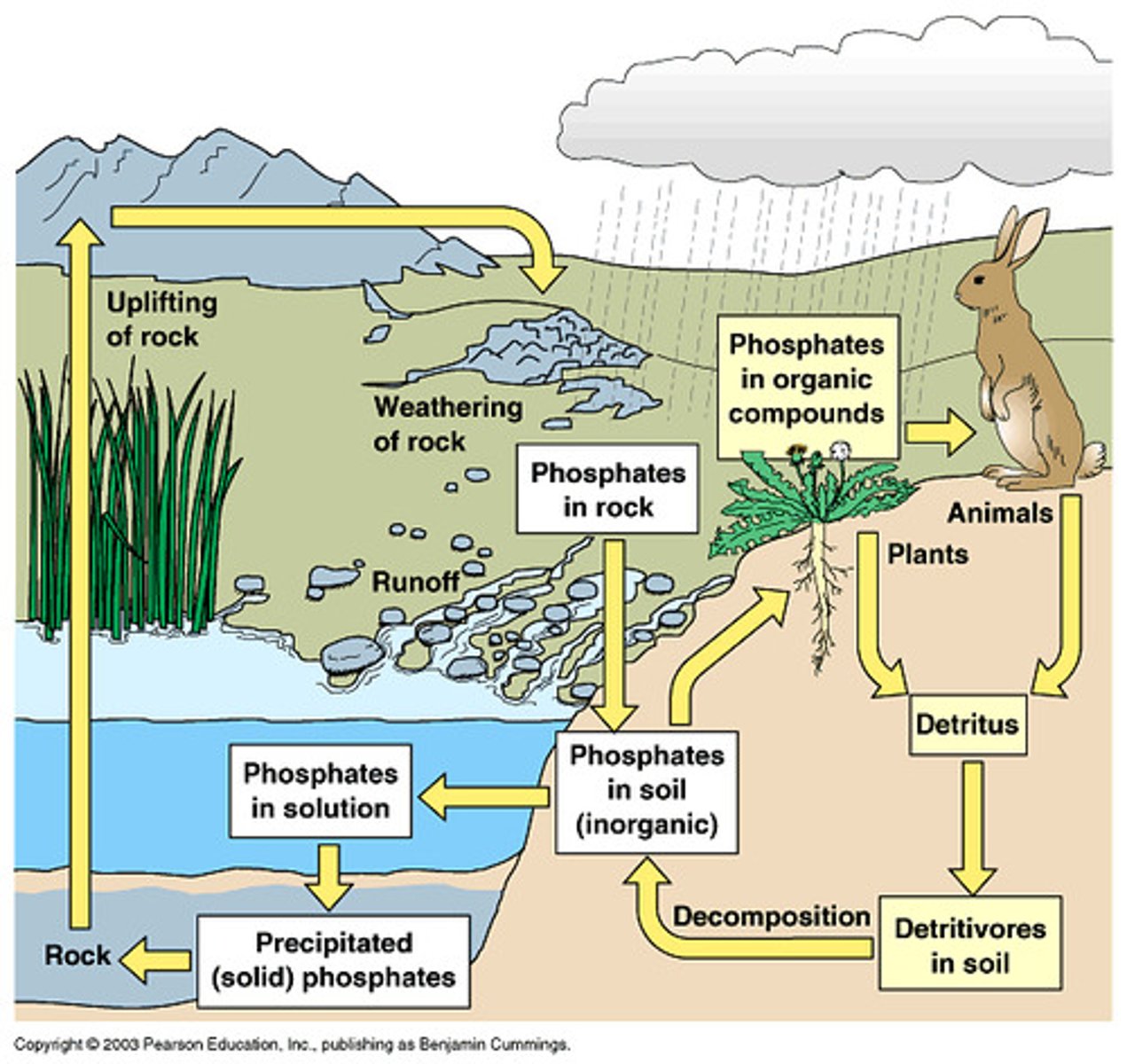Ecosystem Ecology
1/10
There's no tags or description
Looks like no tags are added yet.
Name | Mastery | Learn | Test | Matching | Spaced |
|---|
No study sessions yet.
11 Terms
Carbon Cycle
1. Carbon enters the atmosphere as carbon dioxide from respiration and combustion.
2. Carbon dioxide is absorbed by producers to make carbohydrates in photosynthesis.
3. Animals feed on the plant passing the carbon compounds along the food chain. Most of the carbon they consume is exhaled as carbon dioxide formed during respiration. The animals and plants eventually die.
4. The dead organisms are eaten by decomposers and the carbon in their bodies is returned to the atmosphere as carbon dioxide. In some conditions decomposition is blocked. The plant and animal material may then be available as fossil fuel in the future for combustion.
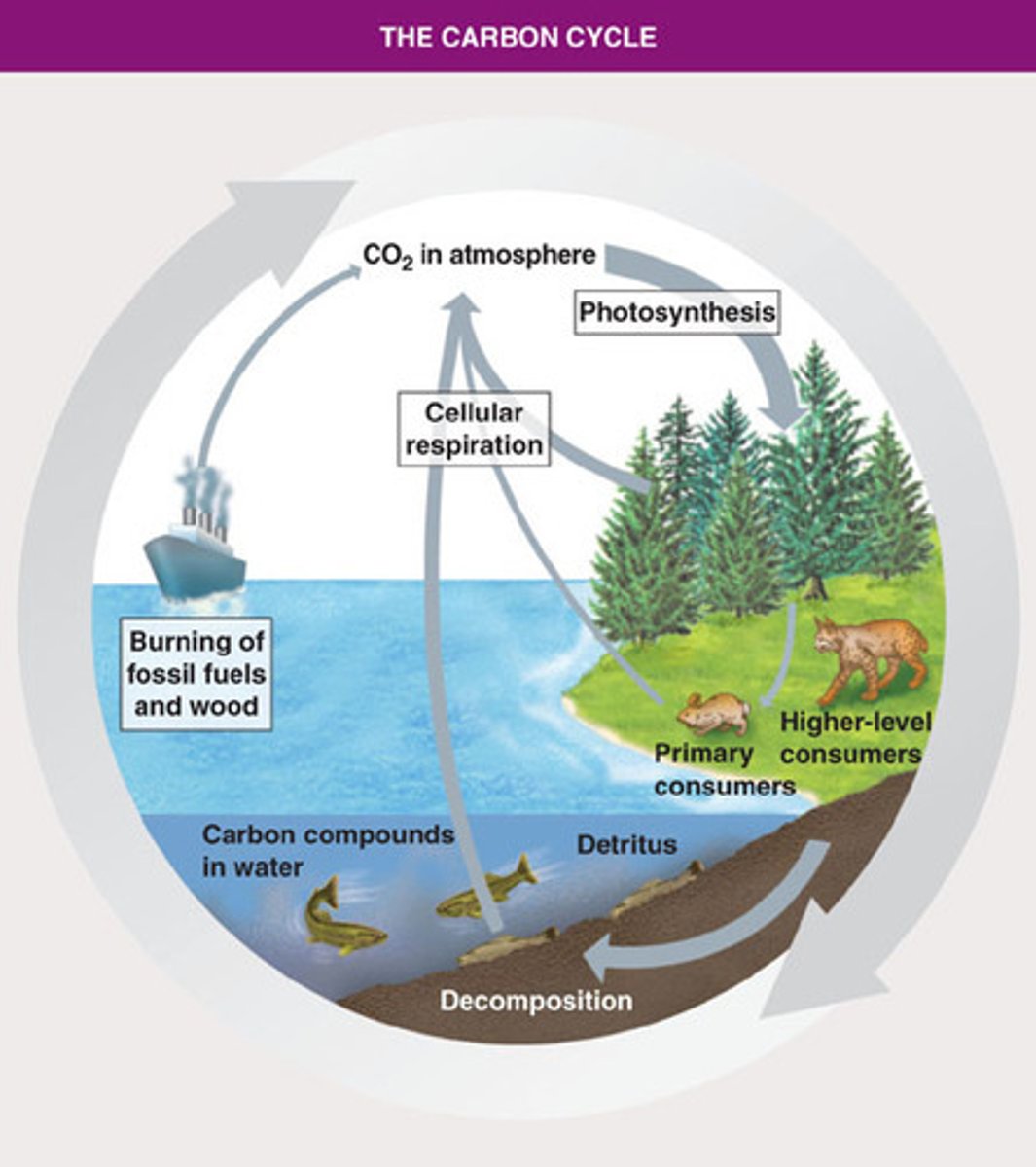
driving forces of carbon cycle
marine biological activity, terrestrial biological activity, and human activity
carbon isotopes
help us track variation in atmospheric carbon and oxygen content and temperature
Ice Core Sampling
Analysis of air bubbles trapped in ice sheets. This sampling showed that CO2 concentrations were much lower during continental glaciations, but high during intervening warm periods.
carbon dioxide sources
1. fossil fuel burning
2. deforestation (tropics)
3. deforestation (outside the tropics)
co2 sinks
Photosynthesis
-plants
-algae
Oceans
-carbonate formation
long term carbon cycle
cycle where plants and animals die depositing carbon in the ground
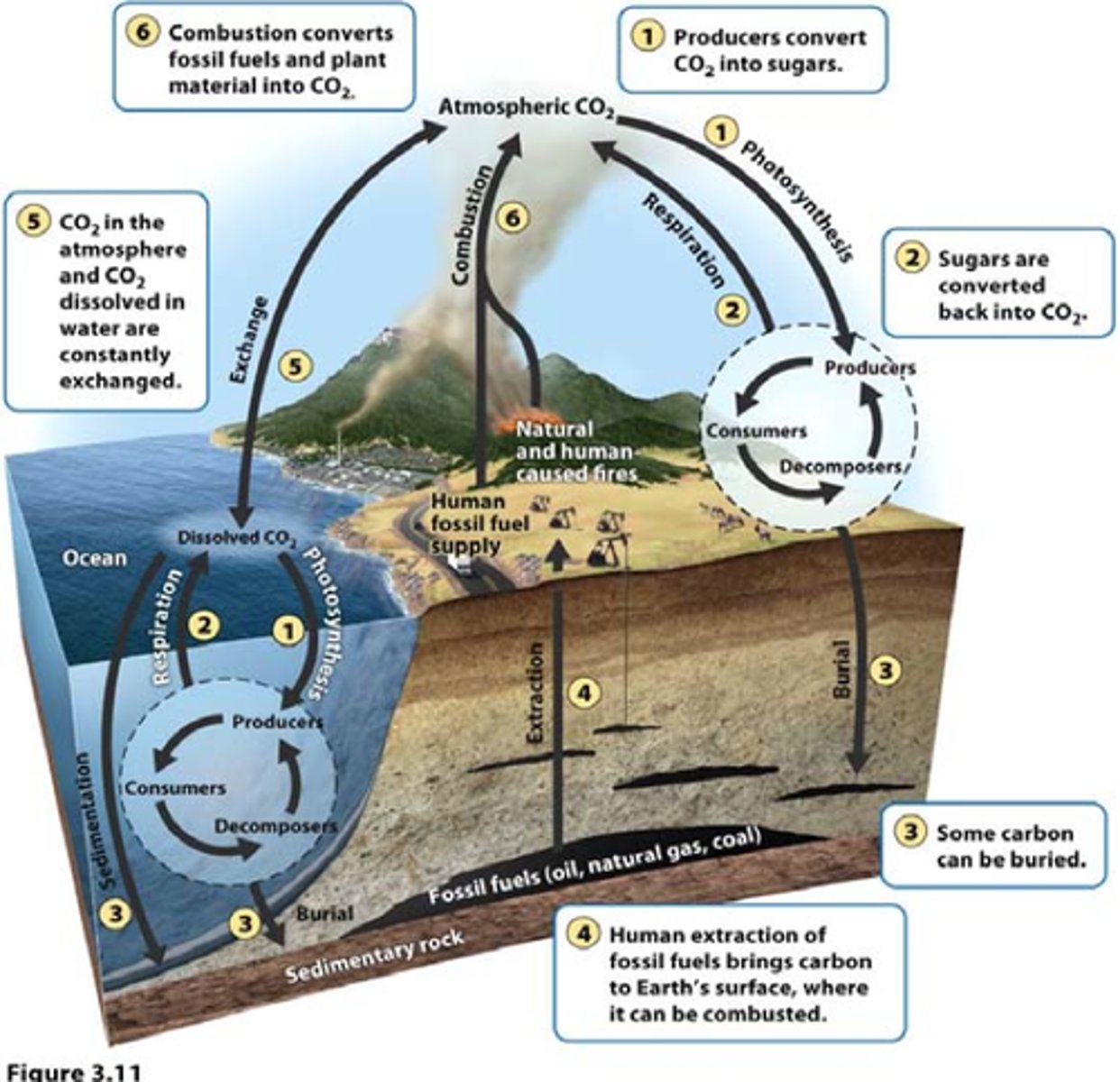
Biogeochemical cycles on land
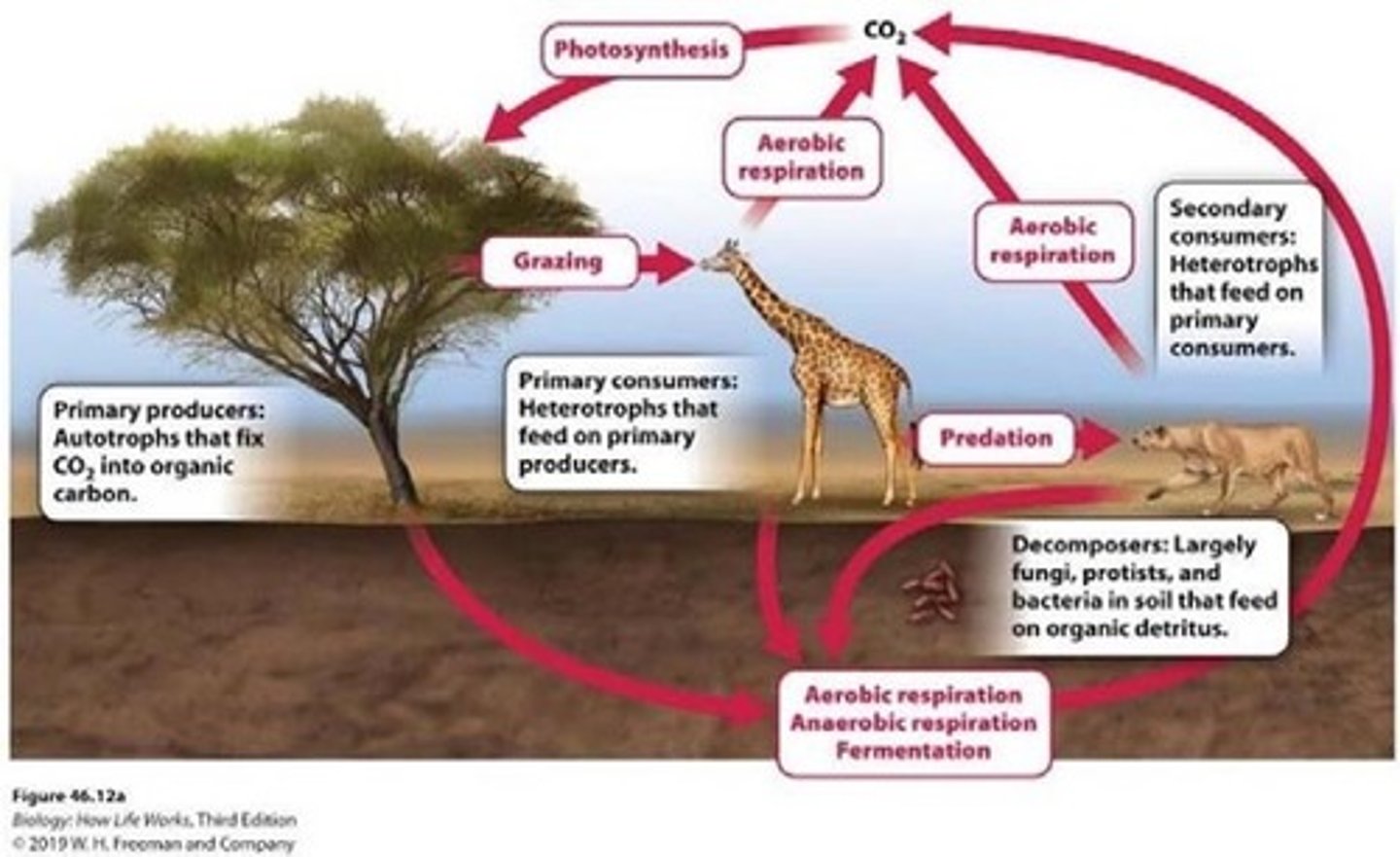
Biogeochemical cycles in the oceans
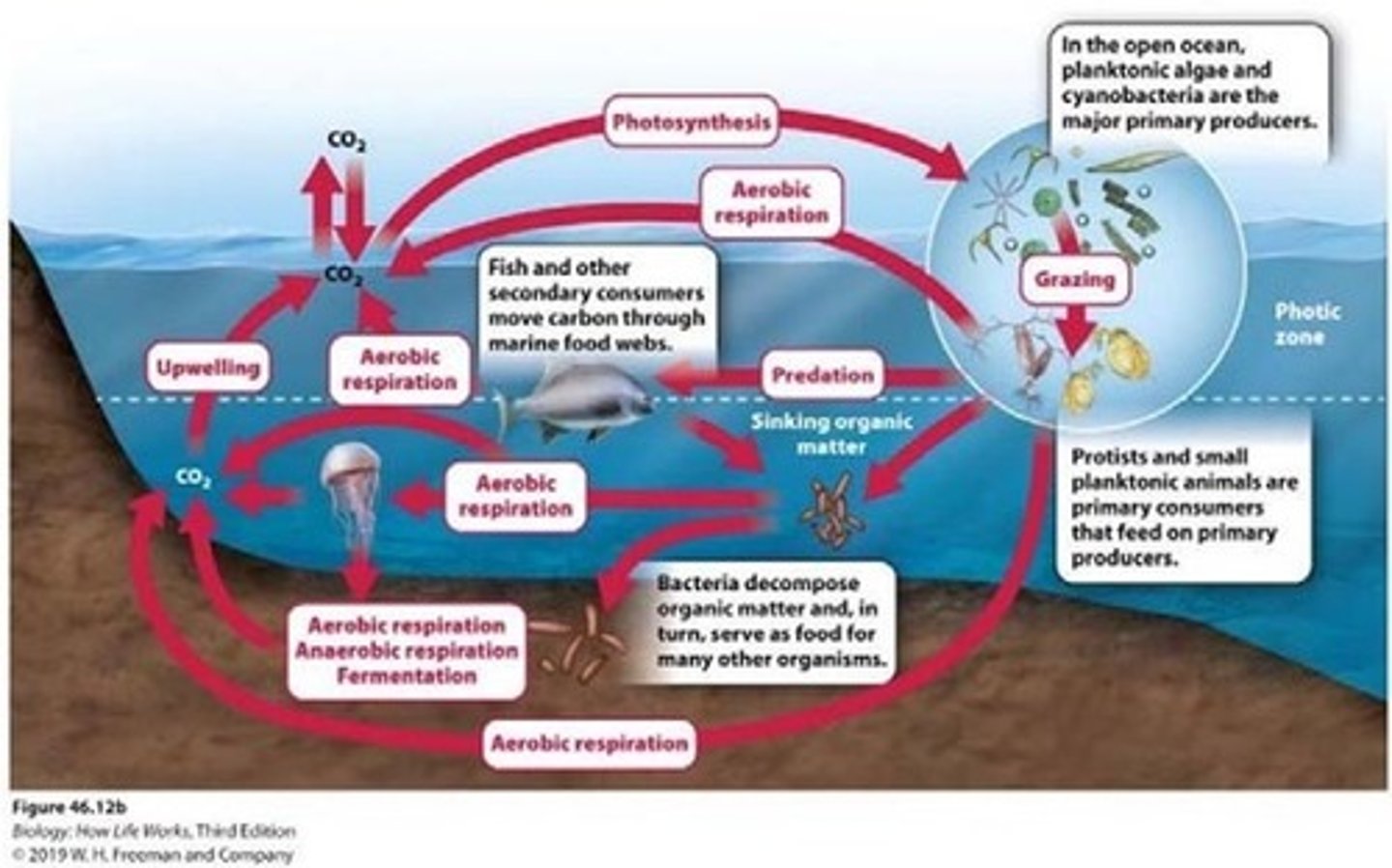
the nitrogen cycle
The transfer of nitrogen from the atmosphere to the soil, to living organisms, and back to the atmosphere

The phosphorus cycle
the cyclic movement of phosphorus in different chemical forms from the environment to organisms and then back to the environment
